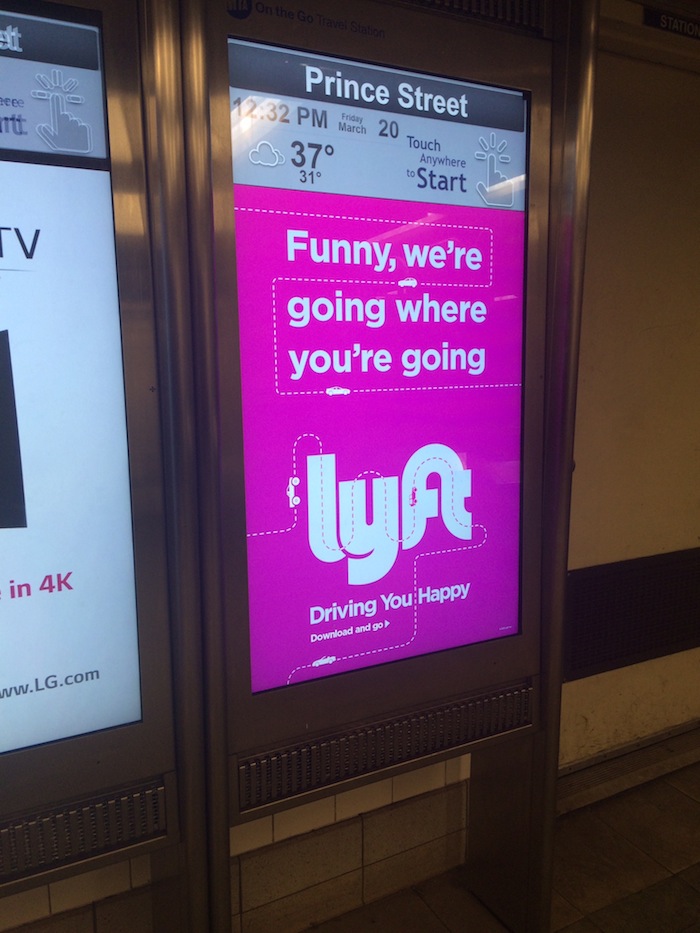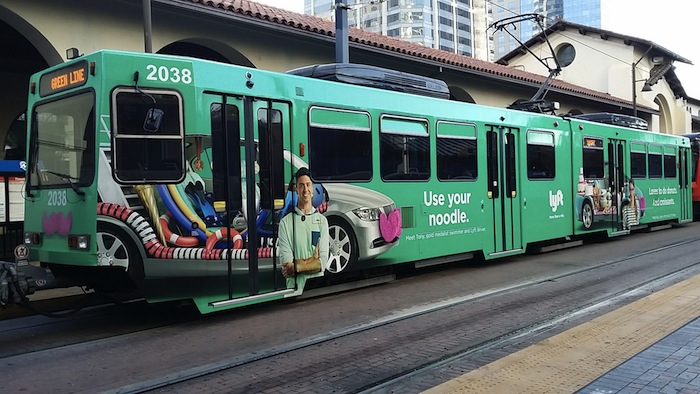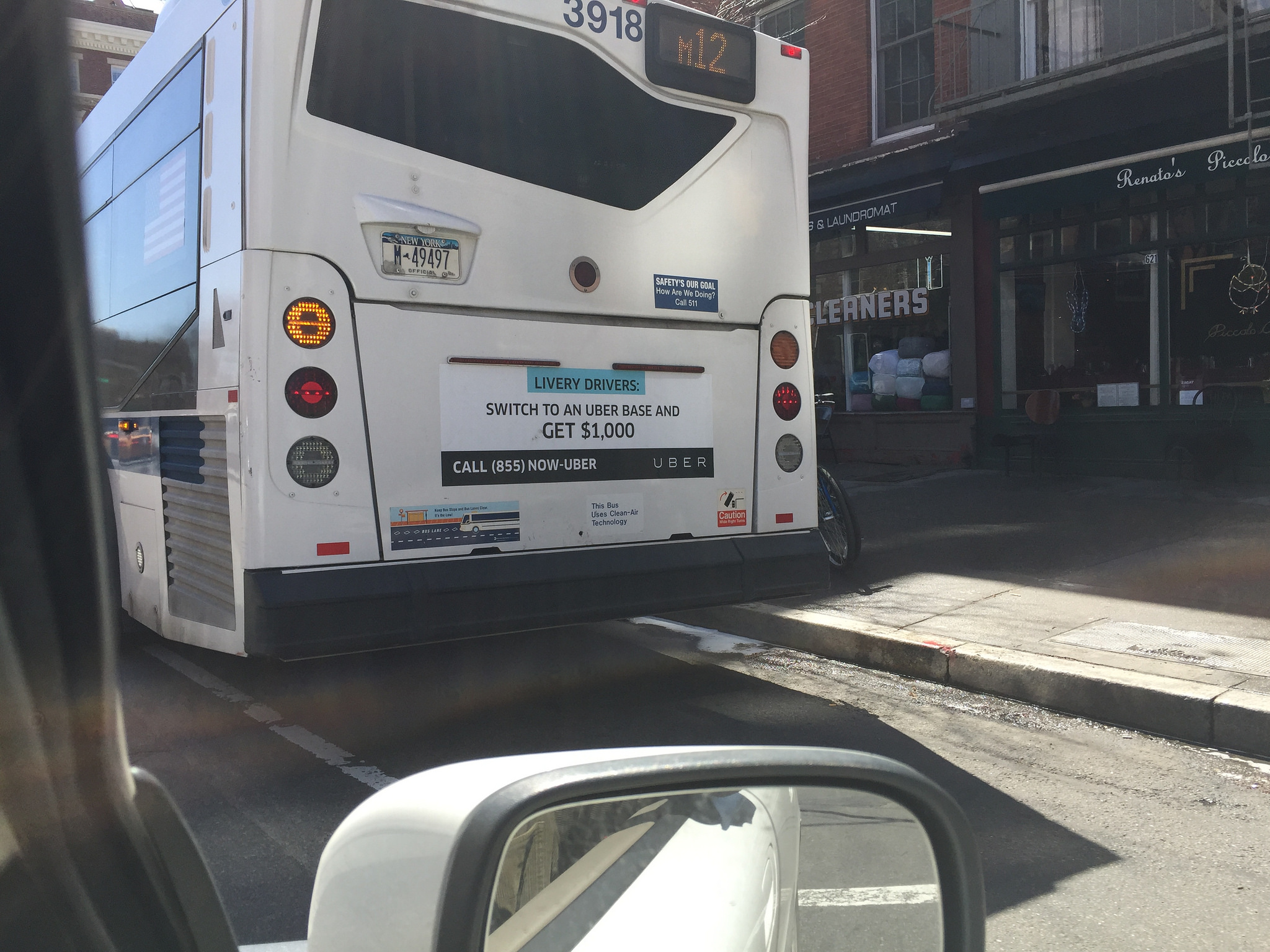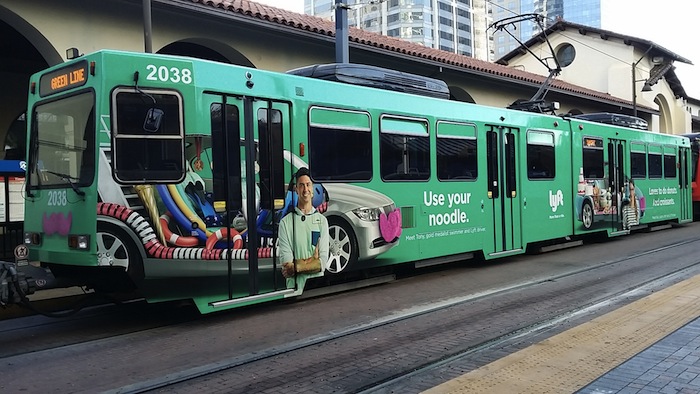New York’s Metropolitan Transit Authority sells ads everywhere—on the risers of steps, on the arms of turnstiles, on the doors of train cars—and hopeful enterprises in the new sharing economy use them to seduce passengers with visions of a frictionless utopia.
So the ad on the touchscreen kiosk at first stood out mainly because it was hot pink. A few seconds later, the Lyft ad gave way to a dynamic list of waiting times. Since such updates were introduced on LED screens in New York a few years ago, they have arguably done more to reduce the anxiety of urban travel than the elimination of graffiti.

The pink afterimage became less shocking than the juxtaposition. The MTA letting Lyft try to convert subway riders into customers of its smartphone-summoned cars comes off as the henhouse signing up for Airbnb and renting a room to the fox. It’s not only Lyft; rival service Uber uses ads on the back panel of city buses to recruit new drivers.
Why is the MTA letting these disruptive ventures compete for mindshare on its own turf? With their grandiose statements and infusions of capital, don’t they pose an existential threat to public transportation?
New York’s MTA doesn’t think so. “We do not consider Uber and Lyft as ‘competition,’” says spokesman Kevin Ortiz. Other municipalities have taken different points of view. San Diego has wrapped entire buses and trolleys in Lyft ads. The San Francisco Municipal Transportation Agency, has plastered an awkward but pointed public-service campaign on its city buses, asking,
“Do You Know What You’re Getting Into?” (The SFMTA has a dog in this fight, since it also regulates taxis; it could use better creative direction.) Likewise, if I were a transit worker with paid holidays and health insurance, I would ask questions, since Uber and Lyft consider their drivers to be independent contractors, and so they not get the benefits or protections employees do.

The Lyft ads in the New York subway continue to reshape our understanding of the relationship between public and private. Just as New York’s digital kiosks show train schedules among the paid ads, smartphone apps such as Google Maps and
Transit display waiting times for buses, subways, and Uber cars, with a link to summon one. New York’s bike-sharing service is an affordable way to get around the fancier parts of the city while also serving as a sprawling, six-thousand-piece billboard for a global financial company.
Public transportation often has a private element. After all, the first New York City subway lines were built with public funds, since investors would not risk the investment, and operated by private companies that collected fares of a city-mandated nickel. The two big private subway operators both went bankrupt before being folded into a public system now run by the MTA.
In the digital age, however, public and private no longer occupy discrete spaces, and developing new infrastructure doesn’t require digging holes. In fact, digital infrastructure can piggyback on existing roads and cell-phone towers and subway displays. New companies can be nimble while the MTA pays pensions and inches along under Second Avenue.

Urban transportation has to innovate and adapt to make cities more livable, but it will take more than cute pink mustaches to demonstrate that well-funded, unencumbered private initiatives serve the public interest.
Photographs: (top) Eugenia Bell; middle courtesy Rowland Gosling via Flickr; (bottom) Blake Eskin











